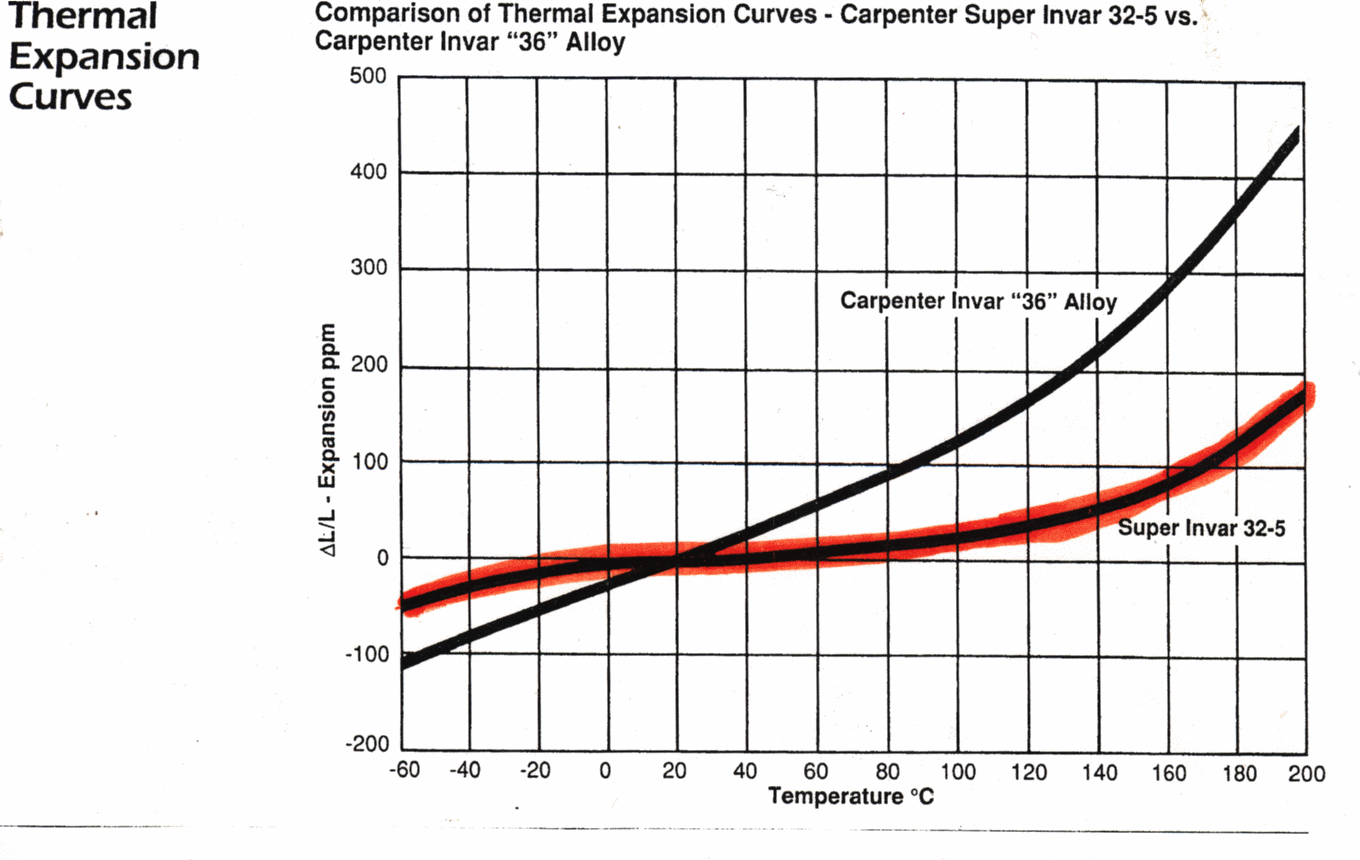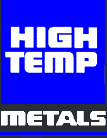Chemistry:
Typical Analysis
|
Element
|
Typical
Analysis
|
|
Carbon
|
0.05
|
|
Nickel
|
31.75
|
|
Iron
|
Balance
|
|
Silicon
|
0.09
|
|
Manganese
|
0.39
|
|
Cobalt
|
5.36
|
|
Sulfur
|
0. 01
|
|
Chromium
|
0.03
|
|
Aluminum
|
0.07
|
|
Copper
|
0.08
|
Description
Super Invar 32-5, a magnetic,
austenitic, solid solution alloy containing iron, nickel, and cobalt,
is designed to provide minimum thermal expansion at room
temperatures. This alloy also exhibits austenite stability to service
temperature at least -67°F and thermal expansion properties less
than those of Invar 36 alloy (36% nickel-iron) when used in the
-67/203& deg;F (-55/95°C) temperature range.
Applications
Applications for Super Invar 32-5
have included structural components for supports and substrates in
optical and laser systems requiring precision measurements. This
alloy has also used in wave guide tubes and other systems requiring
metals in conjunction with low expansion glass/quartz assemblies.
Physical
Properties
|
Specific gravity ........................ 8.15
Density
lb/cu in ................................... 0.294
kg/cu m .................................. 8150
Electrical resistivity (RT)
microhm-cm .................................. 80
Mean coefficient of thermal expansion*
10(-6)/°F(-67 to 203 °F) ............. 0.35
10(-6)/°C(-55 to 95°C) ........... 0.63
|
Modulus of elasticity
x 10(6) psi ................................. 21
x 10(6) MPa ............................. 144
MSTemperature
°F ........................................... -112
°C ............................................ -80
Poisson's ratio ............................ 0.23
|
*-Mean coefficient of
thermal expansion was determined on a 0.250" round dilatometer
sample heat treated per the procedure described under the section
"Heat Treatment." This test is utilized to qualify the
capability expansion properties of a heat. Larger cross-sections heat
treated in this manner may exhibit slightly higher expansion, but
will always be lower than Invar 36 alloy.

Heat
Treatment
Fabricating practices such as
machining, forming, and deep drawing introduce stresses in this alloy
which promote variation in thermal expansion behavior. Consequently,
parts should be heat treated at or as close to finish size as possible.
Annealing
Heat to 1450°F
and hold 30 minutes per inch of thickness, then air cool. Heating to
temperatures above 1000°F relieves the presence of cold work
stresses. The higher the temperature, the lower the annealed
hardness.
Heat Treating for Lowest Thermal
Expansion and Optimum Stability
The recommended heat treating
practice for lowest thermal expansion and optimum stability is to
heat at 1550°F for 1 hour, water quench, followed by a stress
relieving operation at 600°F for 1 hour, air cool and age at
200°F for 24 hours, then air cool.
Because this alloy oxidizes
readily at heat treating temperatures above about 1000°F, it is
recommended parts be heat treated in a protective environment such as
vacuum, hydrogen, dissociated ammonia, or inert gases.
Workability
Forging
Suggested forging
temperature is 2000/2150°F. Heat rapidly and avoid soaking in the
forging furnace. Long soaking time may result in a checked surface
due to oxygen and sulfur contamination.
Grinding
A soft silicon
carbide wheel which will wear without loading is recommended. For
finishing grinding, a satisfactory wheel roughness to start with is
No. 80 grit.
Machinability
Super Invar
32-5 machines similar to, but not as well as , Type 316 austenitic
stainless steel. Its machinability rating is approximately 25% that
of AISI B1112. This alloy is somewhat difficult to machine because
the machined chips are gummy and stringy. Work hardened bars can
result in some improvement in machinability.
Tool geometries
normally used for austenitic stainless steels are suitable for this
alloy. All tools should be kept sharp with a fine finish, be as large
as possible, and rigidly supported.
Recommended cutting fluids are
1 to 1 blend of sulfachlorinated petrolum oil containing 8 to 10%
fatty oil and a paraffin blending oil, or a water emulsifiable
cutting fluid with polar and extreme pressure additives.
Parts
should be degreased and cleaned as soon after machining as possible
to remove any residual sulfur which can cause grain boundary
embrittlement.
When using carbide tools, surface speed feet/minute
can be increased between 2 to 3 times over the high speed
suggestions. Feeds can be increased between 50 to 100%.
On certain
work, the nature of the part may require adjustment of speeds and
feeds. Each job has to be developed for best production results with
opitmum tool life. Speeds and feeds should be increased or decreased
in small steps.
Typical
Mechanical Properties
|
0.2%
Yield
Strength
|
Ultimate
Tensile
Strength
|
%
Elongation
in
2"
|
Hardness
Rockwell
B
|
|
ksi
|
MPa
|
ksi
|
MPa
|
Annealed
|
Cold Worked
|
|
40
|
276
|
70
|
483
|
40
|
75
|
90
|
| 

